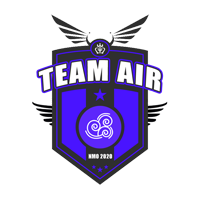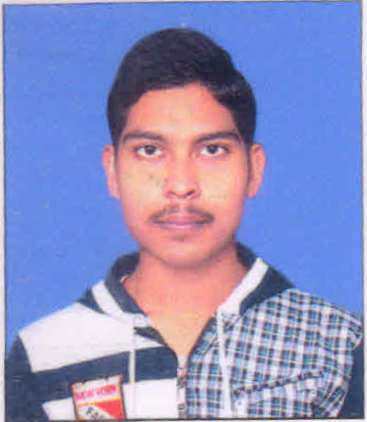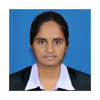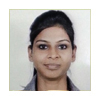
Announcement
FINAL | BUSINESS CASE - BCS 06
Finance Manager Submission BCS 06
NMO 2020
Optimal Financial Utilization Plan for Ramalingam Foods with departmental Budget Allocation
Submission Date & Time : 2020-04-26 04:21:24
Submitted By: ARCHITA S - Finance Manager From Team Air
Assignment Taken
Develop and propose a financial plan with allocated budget for International expansion.Case Understanding
Ramlingam foods has its roots in 1965, when they set up the first restaurant. Over the years, they transformed from a small restaurant, to a batter manufacturing company to a powdered mix production facility. They have also expanded their product portfolio considerably in this time period. Eyeing international expansion, the company has hired the services of the consultancy firm to make its expansion plan. While making an expansion plan the problems identified in the finance segment were as follows: Optimal utilization of the INR 50 crore in order to provide for smooth expansion followed by profit generation. Budget allocation to different departments to ensure their smooth functioning in this process Estimating the sales and revenue in the countries chosen for expansion to decide on production capacity and future plans Estimating the pricing of the goods in the new country based on its existing economic conditions. Deciding on the fraction of revenue to be used in the marketing expenditure. Decide on the extent of automation required in the manufacturing plantBCS Solution Summary
Global Business Consultancy (GBC) was asked for advise regarding international expansion by Indian Company Ramalingam Foods (Tagline: Making Homemade Chefs Since 1965) which has a ready to cook product portfolio, predominantly South Indian food mix including dosa-idli instant mix powder, dhokla , gulab jamoon mix and filter coffee. GBC has decided the company to expand in Malaysia, Singapore and Indonesia of South-East Asia where there is huge south Indian population. The company would make greenfield expansion in Malaysia followed by export to Singapore (by road) and Indonesia (by waterways) from there. GBC has advised Ramalingam Foods to launch with current products at these three countries in this year with planned product portfolio enhancement over next two years. Ramalingam Foods will focus on R&D for product innovation (both authentic Indian and Indian themed foreign dish), marketing for extending reach cum brand building, world-class IT infrastructure for coping up with digital disruption, employee friendly productive HR policy. A financial plan for the allocation of 50 crore was made to the various departments, keeping in mind their various needs and the nature of the country in question. Exports, marketing, HR and R&D used the most funds among others. As we had sufficient funds GBC also suggested backward integration so that the firm becomes profitable in the long run. The detailed solution with the specified allocation is given in the main solution.Solution
Global Business Consultancy Ltd. (GBC) is a pioneer in consultancy services, helping brands grow. It offers its services to various segments such as:
1. Start-Ups/MSME/MNCs
2. International/National Market Expansion
3. Product Portfolio Enhancement
4. Legal Consultancy
5. Project based Research & Analysis
GBC has been helping companies for past 38 years and has a trusted client base including RBC Foods Ltd., Gymnasium Footwears Ltd., Sleepmore Polymers, Swastik Foundation to name a few. Global Business Consultancy was approached for international expansion by Ramalingam Foods (Tagline: Making Homemade Chefs Since 1965) which has a ready to cook product portfolio, predominantly South Indian food mix including dosa-idli instant mix powder, dhokla , gulab jamoon mix and filter coffee. GBC has decided the company to expand in Malaysia, Singapore and Indonesia of South-East Asia where there is huge south Indian population. The company would make greenfield expansion in Malaysia followed by export to Singapore (by road) and Indonesia (by waterways) from there. GBC has advised Ramalingam Foods to launch with current products at these three countries in this year with planned product portfolio enhancement over next two years. Ramalingam Foods will focus on R&D for product innovation (both authentic Indian and Indian themed foreign dish), marketing for extending reach cum brand building, world-class IT infrastructure for coping up with digital disruption, employee friendly productive HR policy. The regions for expansion have been chosen with a view to venture into new geographical areas as by means it already has a presence in Middle east, Southeast Asian countries and England.
While making the financial plan for Ramlingam foods with the 50 crore budget, it was decided that department-wise allocation of funds would be the ideal case as the responsibility of expansion is upon the whole organization. Our team brainstormed on the proper allocation of funds and came up with this:
| Total budget allocated | 50,00,00,000 |
| Budget allotment | |
| HR | 36032883 |
| Marketing | 53808680 |
| IT | 20640000 |
| R&D | 60000000 |
| Export | 66604704 |
| Estate department | 130000000 |
| Backward integration | 100000000 |
| Emergency funds | 32913733 |
| 500000000 |
The detailed allocation is given below:
HR budget
For the company to expand to three new countries, hiring has to take place. In order to create an HR budget the following assumptions were made.
Strategic Decisions taken by GBC:
-
The transportation to ports to be done by the logistics partner
-
Small local office to be created in Singapore and Indonesia
-
Head Office for South-East operations to be created in Malaysia, owing to the tax benefits from export. (Income made from abroad by a company in Malaysia is not taxed)
-
Calculations are done based on the Indian financial year.
-
The finance department in Malaysia looked after the finances in Indonesia and Singapore too through centralized operations
-
Logistic partners exist in all three countries that help in the transport of Ramalingam foods.
Assumptions
-
Incentives to be calculated as 5% of salary keeping in mind the general industry trend of 2.5% - 7.5% of salary
-
The salary was calculated keeping in mind the average salary for a person practicing the same profession in the respective country from www.payscale.com
-
The minimum salary of the respected countries 3940000 IDR, 1150 SGD, 1200 ringgits in Malaysia were considered for making the budget.
-
All the figures in the budget are given in INR. The exchange rate used for calculation is the rate on 25/04/20. 1 Malaysian Ringgit = ₹17.57, 1 Singapore dollar (SGD) = ₹53.57 and 1 Indonesian rupiah (IDR) = ₹0.0049
-
Training was calculated at an average of 25000 per individual.
-
The indian workers were not included in the making of the budget. It was assumed that the people working in the export sector in the Indian department were already senior employees in the firm who had some experience in the export sector.
The total HR budget is ₹3,60,32,883. This is divided among the three countries. The expenditure in Malaysia is more than the expenditure in the other two countries owing to the need of more workers for the manufacturing plant.
Malaysia
In Malaysia, the total expenditure is budgeted around ₹ 2,97,82,433.There are 56 employees.This was done on the basis that in Malaysia, the plant starts production after 6 months. It is only for the 6 months that the salary of most employees is calculated. The ones who are in Malaysia, at the end of three months, when exports actually start to Malaysia are, 1 person for port handling, 2 compliance officers, 3 IT- (1 specialist, 1 analyst and 1 customer care), 2 marketing (both sales), 1 office maintenance, 1 finance (accountant), 3 operations (1 manager, 1 engineer and 1 chief operating officer). For these people, the salary was calculated for 9 months.
The split for Malaysian expenditure in HR are as follows:
Salary-₹2,70,30,889
Training-₹14,00,000
Incentives- ₹13,51,544
Singapore
In Singapore, the total expenditure is budgeted to ₹28,29,925. It houses a small office to deal with the exported goods from India (initially) and then Malaysia. There are only 4 employees in this office, however the expenditure is high as the salary in Singapore is very high. Only 4 employees are placed in this office as this office is only for exports. It is futile to expand the office before gaining considerable revenue from operations. This is the salary for a period of 8 months marking the beginning of export to this country.
The split for Singapore office’s expenditure in HR are as follows:
Salary -₹26,57,072
Training-₹1,00,000
Incentives-₹1,32,853
Indonesia
In Indonesia, the total expenditure is budgeted to ₹13,60,525. It is a cheaper country, as compared to Singapore. The Indonesian office holds the same number of employees (4) as that of the Singapore office for reasons as mentioned above. This salary is for a period of 7 months marking the beginning of export to this country.
The split for Indonesian office is as follows:
Salary:₹12,00,500
Training:₹1,00,000
Incentives:₹60,025
The detailed budget, with the split of salary for different departments, the number of people in each department and the salary of people according to their designation is given in the attached excel sheet under the heading HR.
Marketing Budget
As Ramalingam Foods is opening in these countries for the first time, effort has to be taken to ensure that proper marketing is done to ensure penetration into the market. The total marketing expenditure came out to be ₹5,38,08,680.
Assumption used:
-
Packaging costs are estimated as 1% of revenue as Ramalingam has not ventured into very sophisticated varieties. This would change in the coming years.
-
Advertisements start in a country in the month that the export to the country in question from India starts
Digital Advertisement was one of the main focuses in the marketing budget. ₹2,67,66,680 was allocated for advertisements alone. The breakup of advertisement expenditure is given below:
Google ads- ₹5,20,680
Youtube ads- ₹2,40,000
Facebook ads- ₹3,52,800
Instagram ads- ₹4,03,200
TV ads-₹2,00,00,000
Flyers- ₹7,50,000
Billboards- ₹45,00,000
The detailed split of advertisement cost is provided in the excel sheet. Keeping in mind that the firm has newly entered this market, extensive promotional activities were done by the team. The promotions cost ₹2,06,00,000. The split in promotions are given below:
Online competitions- ₹3,00,000
Stage shows and other promotional events- ₹1,00,00,000
Influencers- ₹36,00,000
Referrals and coupons- ₹7,00,000
Festive season offers- ₹50,00,000
Discounts and free gifts- ₹10,00,000
The promotional events have been explained in detail in the marketing assignment. In brief, a week long online competition would be conducted in all three countries with ₹1,00,000 per country as the prize amount to increase the brand’s visibility. As the brand caters to indian consumers mainly sponsoring ₹20,00,000 each for five different stage shows conducted by different communities will increase the sales. A budget of ₹12,00,000 has been set per country for top 3 influencers. Indians shop during festivals, hence ₹50,00,000 has been allotted to provide discounts during this period. Other promotional expenses include referrals, coupons, discounts and gifts which amounts to ₹17,00,000.
An attractive packaging catches a customer's eye. ₹64,42,000 which is 1% of the revenue was estimated as the packaging cost. However, this amount would go up in the coming years as recommendations were made to Ramalingam Foods to invest in R&D Packaging.
Export and licenses
Ramalingam Foods is in its initial days of international expansion. Hence the one time cost incurred would be huge for procuring necessary licenses. However, being one of the first firms in this segment to reach the above-mentioned countries, the company stands to reap huge benefits from this investment.
Assumptions
-
There are no custom duties from India to the above three south-east countries or within these countries
-
Freight charges from India to these countries is 0.5% of revenue.
-
Freight charges within these countries is 0.1% of revenue. These assumptions were made based on data available on the internet based on shipping cost a percentage of price.
-
Taxes were calculated as 5% of revenue.
-
Logistics for transportation to and from ports were also calculated as 5% of revenue.
The total amount budgeted for this segment is ₹6,66,04,704.The split in the budget is as given below:
License -₹97,152.85
Company incorporation -₹12,58,012
Shipping -₹3,30,39,539.5
Logistics -₹3,22,10,000
As Ramalingam Foods is a private foreign company in Malaysia, it would incur a one-time cost of ₹12,29,900 for incorporation. The licensing cost was to procure FSSAI and HACCP for exports. As can be seen currently the company has huge expenses in shipping and logistics. This is due to the fact that this is the company’s first year in the South-east and the Malaysian plant took off only after 6 months. The major part of shipping cost is insurance and taxes out of which insurance gets the bigger piece. However, in the coming years the rates would come down with increasing volumes from Malaysian plants and partnering with logistic firms and insurance firms.
IT
In this age of Industry 4.0, automation and implementation of machine learning techniques is very significant. Besides reducing the economic cost of running the business and increasing efficiency of the firm, these also help to forecast the future of the company, thus allowing the firm to take the best possible business decisions given the conditions.
Assumptions:
-
The prices were fixed under existing market rates for the product
-
Automation of the plant is included as part of the IT budget
-
Backward integration is the method adopted for IT expansion
-
The company creates a new website for south-east asia
-
The company had never invested in analysis tools before
The IT budget was made to take full advantage of the available technology. The expense allocated to the IT department is ₹2,06,40,000. The breakup of the budget is as follows:
Website - ₹5,50,000
Analysis Tools -₹26,70,000
Infrastructure -₹12,00,000
Automation -₹55,00,000
Backward Integration -₹1,00,00,000
Others -₹7,20,000
The detailed split is given in the excel sheet under the heading IT budget. A highlight of the budget is that in order to be ready for the tech-savvy market, Ramalingam Foods should invest in modern technologies like VR and blockchain to become the market leader. Hence ₹1,00,00,000 has been allotted for investment in startups. Another avenue for expenditure is automation. Automation would lead to reduction in workforce and reduce the long run cost of the firm. ₹55,00,000. A provision was also made to include SAP and other analysis toolkits to have a proper analysis of the business. This amounted to ₹26,70,000. Others mentioned in the breakup include antivirus, skype and specialized training.
Research and Development
R & D is a crucial part of any consumer-centric business operating in a monopolistic environment. It differentiates one product from the other. It was found that packaging is a key factor to draw masses and offer a considerable markup for the product. Hence allocation was provided for innovations in packaging. As the company is expanding to new horizons, it is necessary to come up with products that reflect the culture of the place. Hence funds have been allocated to the development of instant foods in south-east asian cuisine and development of fusion foods combining indian and south-east asian food.
Assumptions:
-
Ramalingam Foods have a very modern management who likes to experiment into newer areas while sticking to its own humble roots.
The budget allocated for R&D is ₹6,00,00,000. The division is as follows:
Packaging innovation - ₹1,00,00,000
Indigenous food development - ₹3,00,00,000
Fusion food development - ₹2,00,00,000
Plant, property, machinery budget
Out of the investment, ₹10,00,00,000 was spent on investment in land for the factory The construction cost ₹2,00,00,000. It was assumed that every product uses 5 machines and the cost of machines was taken as ₹4,00,000. Hence, the total cost was estimated to be ₹1,00,00,000 for the machines. Total budget allocated for this is ₹13,00,00,000.
A projected profit and loss statement for the company was also made in the current scenario. The company showed a loss, however as can be seen from the excel sheet the loss was due to the loses made due to investments and not the ones due to operation of the company. As the operational loses of the company are very small and as the market continues to grow, this business would be profitable from the second year.Promotions and advertisements are counted as a part of investment in this case and so is r and d and the initial amounts spend in setting up the website and analysis tools, Hence eliminationg all that would reduce the loses to a very small amount which is perfectly fine for a firm in its first year of operation in a new country. The loses could also be due to the fact that the firm started its bueiness from the fourth month of the financial year.
The revenue was calculates using guesstimation using the indian population in these regions by the group leader. The details are present in his attachement.
Conclusion
The success of any expansion plan is based on the allocation of the budget. With the right stress in the right area, the company would be able to function efficiently. By focusing, the right amount on the right department, the penetration to the new area can increase significantly. Though the profits are shown to be negative the major chunk is not due to operations. Advertisements were taken as a part of investment. Hence, this company would continue to grow in the upcoming years and generate huge profits.Attached File Details

Pragya Jain
 IILM-ACADEMY OF HIGHER LEARNING JAIPUR
IILM-ACADEMY OF HIGHER LEARNING JAIPUR
Detailed explanation of all the key concepts. Good work.
Participant
ARCHITA S
IIM INDORE
Pursuing Integrated Programme in Management from IIM Indore. Cleared CFA L1 in December 2019. Interested in finance.
Team Sky BCS 06 Submission
Total Team Points: 63004.5
Team Air BCS 06 Submission
Total Team Points: 66715.5

















